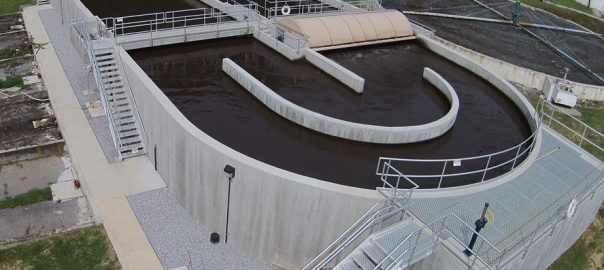
The U.S. has close to 170,000 public water systems and publicly-owned wastewater treatment plants. Over 80% of the U.S. population gets their water from these systems. Wastewater treatment security is essential to making sure U.S. households receive clean, safe water and have a place for sewerage to go.
The Water and Wastewater Systems Sector, a division of Homeland Security, covers a lot of ground. It protects against attacks with deadly chemicals and other contaminants. It protects computer systems within a wastewater treatment plant or public water system from cyberattacks. It keeps people from maliciously releasing harmful chemicals into clean water holding tanks.
You also have the EPA enforcing the rules in the Clean Water Act and the Safe Drinking Water Act. These rules keep corporations from releasing large quantities of oils, grease, and other pollutants into water treatment plants. They also enforce rules regarding the discharge of stormwater into waterways.
Federal, State, and Local Agencies Work Together
Multiple agencies work together to ensure security and safety when it comes to public water and water treatment. Each agency may start out with a specific goal, but they work together to ensure standards for security are met. In addition, they work with local law enforcement and personnel at water treatment plants. Several goals are implemented to heighten security and safety.
The first goal is to make sure that cybersecurity and physical security are both implemented in a water treatment plant. The EPA and Waster and Wastewater Sector teams look at possible hazards and issues and come up with recommendations for changing them. State and federal water standards are also set and national labs do the testing to make sure water meets safety requirements. With these measures in place, the focus turns to maintaining a water treatment plant’s security and safety.
Security is only part of a plan to protect our water. The Clean Water Act Action Plan is handled by the EPA. It focuses on preventing pollution from getting into waterways by managing farm runoff, working on prevention of sewer overflows, managing stormwater runoff in urban areas, managing construction site pollution, and preventing contaminated water from industrial factories from creating problems.
The public can access this information through the EPA’s State Water Dashboard. They can find out if their local water system is in compliance or has issues. They can bring up what water treatment plant or facility didn’t comply and what the issues were.
Testing to Ensure Drinking Water is Safe
The Clean Water Act dates back to 1948. It regulates the quality of U.S. surface water and water that’s piped to homes on that water system. There are limits on more than 90 contaminants that are found in drinking water. Water treatment plants have to test for these contaminants that range from bacterial infections to organic chemicals. If they’re found, the public must be notified and the issue must be investigated and corrected.
Federal laws require public water to be tested. How frequently this is done depends on the size of the system. Some water treatment plants are set up to have the water quality monitored remotely through SCADA technology. Remote monitoring is capable of returning this data every hour. Others test the water quality once a month, ponce per quality, or once a year.
Water Treatment Plants and Federal Agencies Rely on Supervisory Control and Data Acquisition (SCADA)
SCADA helps users collect information from different components and sensors. In a water treatment plant, a SCADA system is getting information from pumps, valves, and other water treatment equipment. This information can be collected from a remote location, which increases the risk of cyberattack, but it also helps plant managers understand if there are issues. With security protocol in place, such as keeping the system off a DSL connection, there’s less risk of a breach. Strong passwords, firewalls, virus and malware protection, and VPN connections also help.
One of the biggest benefits of SCADA is that a system can be set up with sensors that measure the water’s chlorine levels, pH, and turbidity. This information is constantly available, which helps water treatment plant personnel control quality and make changes if anything is wrong.
Lakeside Equipment can help water treatment plants improve performance and cut costs. With an automated process control system, energy efficiency is achieved. Paired with SCADA systems, security and quality can be monitored around the clock. SCADA systems can monitor chemical levels, check for leaks or problems with machinery, and send alerts if there are issues.
Talk to Lakeside Equipment about the Sharp Biological Nutrient Removal process control system. We’re happy to help you upgrade your equipment while also keeping your budget in mind. Call 1-630-837-5640 to learn more about Sharp BNR.




